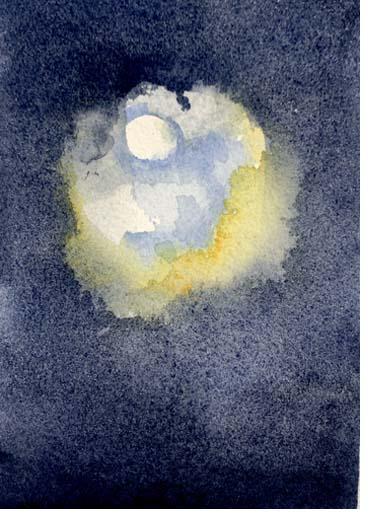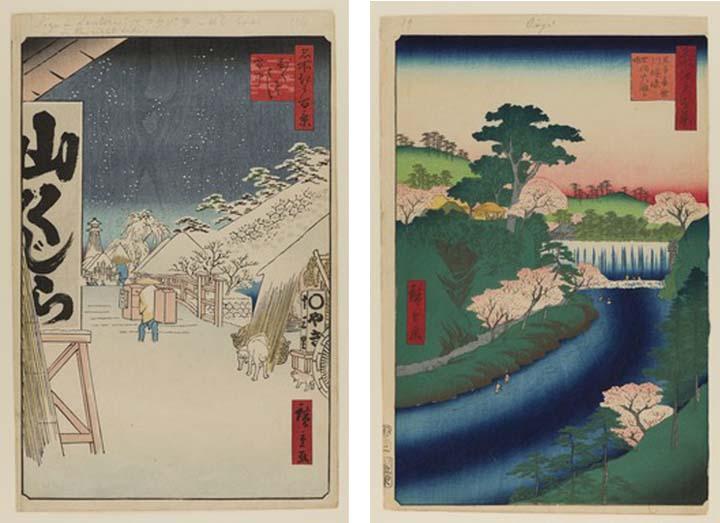DART Diary: 100 Famous Views of Edo
Woodblock prints known as ukiyo-e (''the floating world'') have had a lasting effect on Western art. Their pictorial and printmaking innovations have reverberated in the works of Impressionists and Post-Impressionists, notably Monet, van Gogh and Whistler—especially the work of Utagawa Hiroshige (1797-1858). This artist, who was of the samurai class, is probably best known for the series, 100 Famous Views of Edo. The artist depicts seemingly rural settings; people, trees, temples, roads, mountains, bridges, rivers, are his subjects, covering all the seasons, different weather conditions, and often surprising subjects, even making a cat the main character in a scene set in a brothel.
The allure of this series has much to do with the way ordinary people live in cities—especially where they go to escape the din and hustle of daily life. During the period in which Hiroshige produced his woodblock prints, Tokyo, then known as Edo, was still a non-industrial city. But it was one of the world’s three largest, along with London and Beijing. Its population was crowded into alleyways jam-packed with wooden and paper houses, leaving much of the territory open for temples, parks, and large estates of the shogun. Edo’s waterways were the main routes to its surroundings, and so they feature prominently in Hiroshige’s work.
Because he zeroed in on the activities that made city living what it was in this series, published between 1856-58, Hiroshige often featured working people in their places of work: Lumber yards, carpentry shops, fire fighters, street food vendors, actors, and sex workers, for example. This is why his prints were so popular. He created an audience of urbanites for his work, making the viewer a participant, not a bystander. The series was so popular that his publisher issued up to a thousand impressions of some of the scenes, which made it possible for anyone to spend what amounted to the cost of a bowl of noodles. It also prompted the artist to extend the series to 118 scenes.

I have always been drawn to this work for the same reasons. In fact, my own moon viewing pavilion, which overlooks the East River, is just an eight-minute walk from my apartment; I have done many watercolors from this viewpoint, including the one shown here.
What’s your favorite city escape hatch? Give it some thought and let me know!
For now, head to the Brooklyn Museum for Hiroshige’s 100 Famous Views of Edo, now on view for the first time in 24 years Info.
Check out the public events here, including a printmaking workshop on July 18, which is sure to fill up quickly Info.
If you can't get to the exhibition, see all 100 Views here
To subscribers: Send me a few lines about your favorite urban escape hatch for consideration, including a photo and/or drawing/painting.
If you would like to subscribe to DART: Design Arts Daily, please go here





